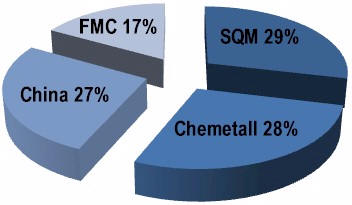
CHEMINFO: Lithium carbonate The following information has been extracted from our CHEMINFO database, which also contains hazard control and regulatory information. [More about...] [Sample Record]Lithium carbonate is used as a starting material for the production of other lithium compounds (e.g. lithium bromide, lithium chloride, lithium hydroxide, lithium oxide, and lithium aluminum silicates; as a flux in the production of specialty glasses, enamels, and ceramics; in the production of glazes on ceramics and electrical porcelain; as an additive to cement and concrete to control setting times; as an additive to molten salt baths for the electrolytic production of aluminum; as a catalyst; for coating of arc-welding electrodes; in nucleonics; in luminescent paints; varnishes and dyes. Used medicinally in treatment of manic depression, clinical depression; and as a mood-stabilizing drug. It has also been evaluated in the treatment of schizophrenia, alcoholism, periodic aggressive behaviour and herpes.(2,23,25,30)The available studies for lithium carbonate are generally of poor quality, with limitations such as administration of only a single dose, poor reporting of the data, and lack of information on maternal toxicity. Similar limitations exist for studies with other lithium compounds. There are no well-conducted studies that show developmental toxicity for lithium carbonate, or other lithium compounds, in the absence of maternal toxicity. For lithium compounds in general, the US Institute for Evaluating Health Risks (IEHR) concluded that there is adequate information to indicate that developmental toxicity can occur in rats and mice at doses from 19-89 mg/kg/day (cited as 2.71-12.67 mmol/kg/day), usually in the presence of maternal toxicity.
